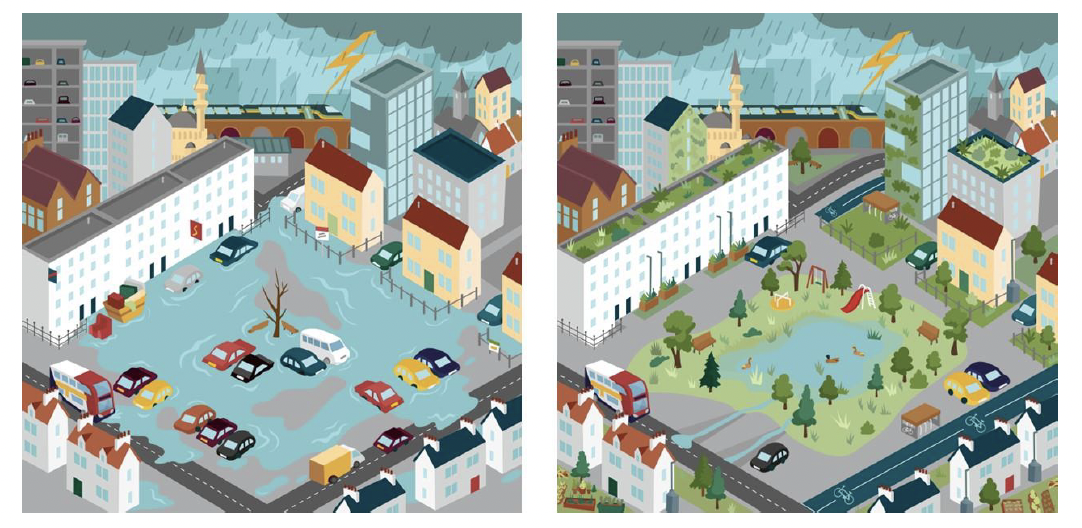National Flood Resilience Strategy
Sets out a vision for a flood resilient Scotland through to 2045 and beyond.
What is flood resilience?
Flood resilience is about our ability to avoid flooding and, where we can’t avoid it, being well prepared, responding well, and recovering quickly from damaging flood events.
Components of flood resilience: Assess
Description: This is about understanding where flooding will occur and what the impacts are when flooding happens. This can help us avoid, prepare and respond to flooding.
Components of flood resilience: Avoid
Description: This is about how we minimise our exposure in areas that flood. This includes avoiding, as a first principle, development in areas that flood, areas which have an erosion risk, and ensuring that the impact of flooding on infrastructure is minimised. This also includes changing activities in areas that frequently flood. For example, if a community is exposed to frequent flooding, one option to improve its flood resilience in the long term may be to slowly withdraw from the flooded area over time.
Components of flood resilience: Prepare
Description: Where we can’t avoid flooding in certain areas we need to prepare. Being prepared includes being aware of our flood exposure, having well-designed places that are adapted to their flood exposure, having good flood forecasting and warning systems in place, being ready to respond effectively and having flood protection in place. This can be large flood protection structures like we have in many of our towns and cities, enhanced natural protection at the coast (for example from dunes), or small individual household protection measures (such as flood guards). Flood resilience actions are coordinated through Scotland’s Flood Risk Management Plans.
Components of flood resilience: Respond
Description: This is what we do when flooding happens to ensure that we stay safe and to minimise the impacts. It includes the actions of the emergency services, other responders and individuals – a whole Team Scotland approach. Our flood forecasting and early warning systems help communities and emergency services to respond. It also includes how we respond after the event by taking into account what we have learned and what we can do differently in future to reduce the impacts next time it happens.
Components of flood resilience: Recover
Description: This is about how quickly we can bounce back after a flood in a way that makes us more resilient to future floods. Our ability to recover will depend on how well we have avoided areas that flood and how well we have prepared and responded. Communities that avoid well, prepare well and respond well will recover well.
Supporting positive behavioural change will also play a role across all stages of improving flood resilience. Research shows that people systematically underestimate the risk and impact of flooding, and addressing this will hopefully encourage greater buy-in and support for improving flood resilience.

Contact
Email: Flooding_Mailbox@gov.scot
There is a problem
Thanks for your feedback